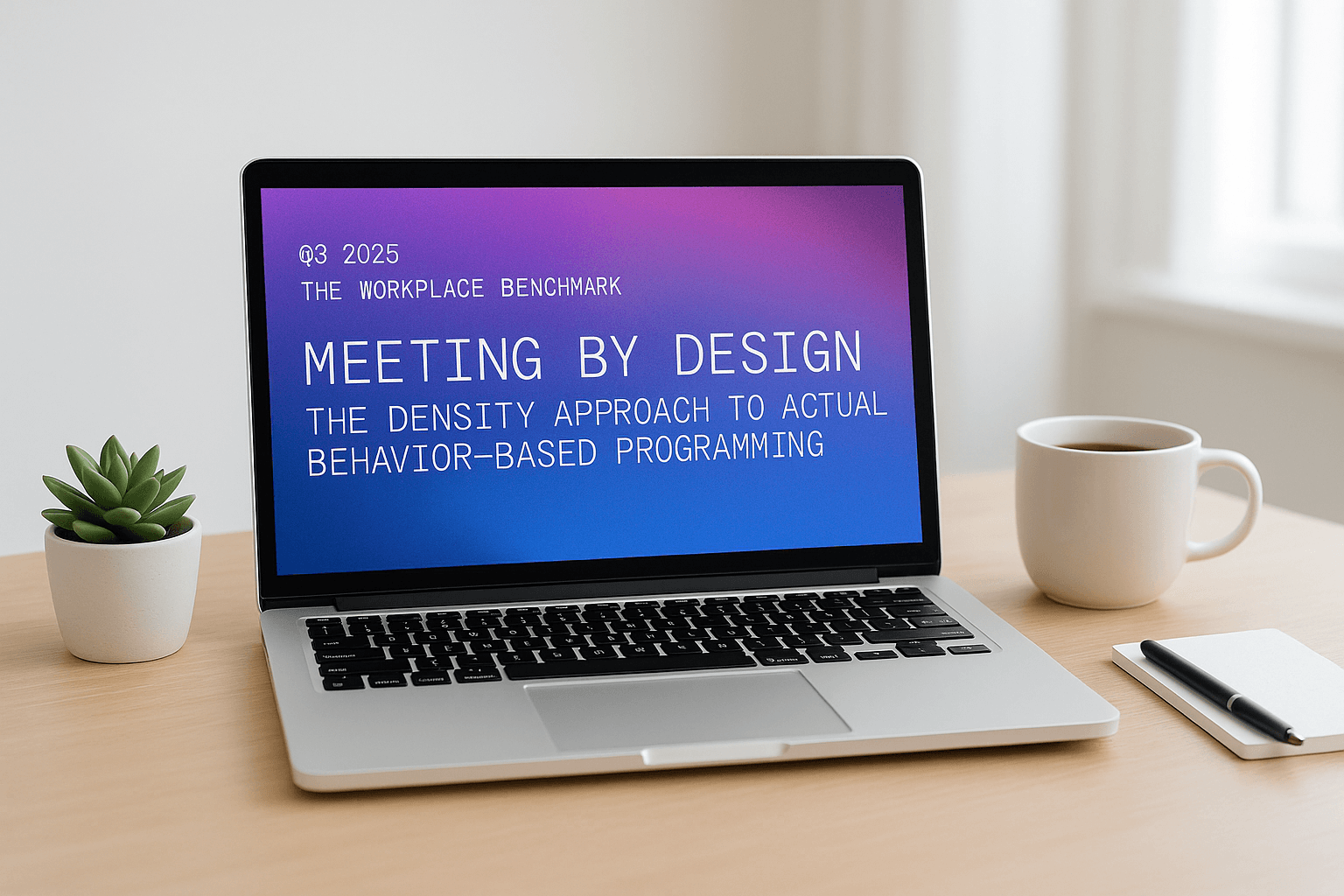Less is more: A success story on downsizing office space
How one company saved on office space without sacrificing employee experience.

Summary
Goal: Optimize an underutilized office to reduce lease costs and increase workplace vibrancy.
Action: Close three floors out of seven, and bring employees together on the remaining four floors.
Outcomes:
- Exited three floors in a top North American market, where average annual rent for a 25,000 square foot floor is $880K ($2.6M for 3 floors).
- More than doubled average desk saturation, from <20% of desks used at least an hour a day to 50%.
- Preserved meeting room availability: even on peak days the busiest floors have ~20% available capacity.
Consolidation without frustration.
Occupancy planners are under pressure to find efficiencies in office spaces that go massively underutilized in the new world of work. But at the same time, teams say they need more space and dedicated desks to make RTO work. It’s a high-stakes game of Tetris that will take a new set of tools and metrics to win.
A major telecommunications company turned to Density to help them solve this problem. They were paying for seven floors of premier high-rise office real estate, but most of the space was sitting empty. On average, more than 80% of desks went unused every day according to Density’s sensor data.
Based on their observations using Density sensor data, the company found they could close 3 floors without negatively impacting employee experience or access to amenities like meeting rooms. Following the floors closing, Density Advisory helped the company understand the impact.
The same number of people in less space.
Following the closing of the 3 floors, the office still saw the same level of occupancy across the remaining floors. Before the change, about 301 people were in the office at peak times. After: 307. People kept coming in, just to fewer floors.

Desks were used more than twice as much as before.
As you’d expect when the same number of people use fewer floors, the desks on the remaining floors saw much higher utilization. Before, only 20% of desks were used for at least an hour a day. After the consolidation, that jumped to 50%. Longer use (3+ hours) nearly tripled from 12% to 33%.

Meeting rooms still have 20% more capacity.
Meeting room availability is usually the #1 sticking point when considering space consolidation. Like it or not, employees often spend some portion of their in-office time on video calls. Space planners who lack granular data shy away from consolidation out of fear of putting too much pressure on meeting room availability.
This Density client had the benefit of knowing exactly how people use their space. Meeting rooms were used more often; they went from being occupied for ~3.5 hours a day to 4.3 hours and meeting room saturation increased by 23%.
But here's the key: even on the busiest days, plenty of meeting rooms were still available.
The busiest two floors topped out at 60% peak occupancy. Usually, 80% is where the meeting room experience “breaks” and people have trouble finding a room that fits their needs. This means the office has at least another 20% of headroom in meeting space saturation.

A win-win for the workplace.
This company significantly cut its office costs in a market where 3 floors can average $2.6M in annual rent, without negatively impacting employee experience. In fact, the office feels more lively now with more people on each floor.
Armed with insights based on Density data, this customer found a way to save money and create a better work environment. It's a win-win situation that shows the power of smart planning in the modern workplace.
Key Takeaways

DisruptCRE founder shares how corporate real estate is changing
Companies are moving employees from underutilized offices into "space as a service” options with utilization data.
Watch now
Half of offices are empty but you still can’t find a meeting room
Employees waste up to 30 minutes a day looking for a meeting room to meet in workplaces.
Read moreMost recent

Meeting space playbook: programming ratios that really work
Forget static formulas. This new research-driven playbook shows how to use real behavior to right-size your office for today’s meetings.

Space waste: The industry’s naughty and nice list
Our sensors spilled the beans: What industry is winning, who's wasting and who's hogging your office real estate.
.png)
Improve your occupancy sensor RFP with our best practice guide
Discover essential questions to simplify your occupancy sensor RFP process and confidently choose the right vendor.
.png)
Room raiders: The office upsizing epidemic
Tiny teams hogging big rooms leave large groups stranded—welcome to the new war for meeting space!
Explore other Density Products
Atlas for Workplace
Insights for the workplace that help you cut costs and deliver better spaces.
Learn more